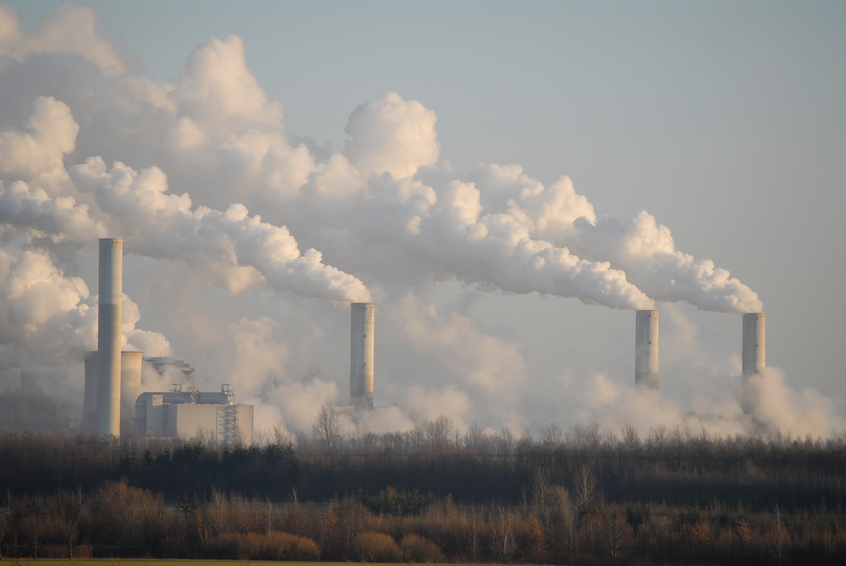Environmental Engineering 15 PDH Discount Package 3
Courses in this Package
Baghouses and Filters for Particulate Matter Control (C05-010)
Electrostatic Precipitators for Particulate Matter Control (C06-003)
Nitrogen Oxide Air Emission Impacts and Controls (C04-008)

This online engineering PDH course presents the process descriptions of various styles of baghouses and air filter systems. Design and operating parameters are analyzed. The applicability of filter materials and operating principles are explained for a variety of uses.
Baghouses and other devises using fabric filters are used in industry as an effective pollution control devise for removal of particulate material within a captured air stream.
This 5 PDH online course is intended for environmental and chemical engineers as well as other professionals working in the field of air pollution control. This course is also beneficial for a person with basic knowledge of air filter equipment and an interest in controlling particulate emissions. In this course, the reader will learn about the various filter options for controlling particulates and be able to evaluate the advantages and disadvantages of each as they apply to emission sources.
This PE continuing education course is intended to provide you with the following specific knowledge and skills:
- Background of particulate compounds in air streams
- Types of air filter equipment used for particulate control
- How different filter media is used
- Design parameters for baghouses and filter units
- Support information for enhancing filter operation
In this professional engineering CEU course, you need to review EPA Air Pollution Control Cost Manual (EPA 452/B-02-001), Section 6 (Particulate Matter Control, Chapter 1 "Baghouses and Filters".
Upon successful completion of the quiz, print your Certificate of Completion instantly. (Note: if you are paying by check or money order, you will be able to print it after we receive your payment.) For your convenience, we will also email it to you. Please note that you can log in to your account at any time to access and print your Certificate of Completion.

This online engineering PDH course describes the commonly applied ESP designs used to remove PM from stationary sources. Design and operating parameters are presented. Various ESP designs such as Plate-Wire, Flat Plate, Wet ESPs, and Tubular ESPs are reviewed in this course.
Electrostatic precipitators (ESP) are used to remove fine particulate matter from contaminated air steams. In these devices, an electrical force is generated to move the particles out of the flowing gas stream and onto collector plates for particulate emission control. There are different configurations and types of ESPs designed and operated for removal of particulate mater (PM).
This 6 PDH online course is intended for environmental and chemical engineers as well as other professionals working in the field of air pollution control. It is also beneficial for a person with basic knowledge of air pollution control equipment and an interest in controlling particulate emissions. In this course the reader will learn about the theory of ESP particle removal and how it is applied to actual ESP designs; the conditions for particle removal and its effects on ESP equipment selection; and optimizing ESP operation.
This PE continuing education course is intended to provide you with the following specific knowledge and skills:
- Background of particulate compounds and size ranges
- Types of ESPs used for particulate control
- Gas characteristics and its effects particle charging and removal
- Design parameters for designing ESP units
- How ESPs are operated
- Support information for enhancing ESP performance
In this professional engineering CEU course, you need to review the EPA Air Pollution Control Cost Manual (EPA 452/B-02-001), Section 6 (Particulate Matter Control), Chapter 3 "Electrostatic Precipitators".
Upon successful completion of the quiz, print your Certificate of Completion instantly. (Note: if you are paying by check or money order, you will be able to print it after we receive your payment.) For your convenience, we will also email it to you. Please note that you can log in to your account at any time to access and print your Certificate of Completion.

This online engineering PDH course explains how nitrogen oxides (NOx) are formed, their impact on the environment, and specific control technologies and solutions. This course further explains the principles on which all NOx control and pollution prevention technologies are based, available NOx technologies for various combustion sources, and performance and cost of NOx technologies.
This 4 PDH online course is intended for environmental and chemical engineers as well as other professionals working in the field of air pollution control. The course is also beneficial for a student with basic knowledge of EPA air pollution regulations and an interest in controlling NOx emissions from combustion sources. The reader will learn about the various control strategies and be able to evaluate the advantages and disadvantages of each as they apply to combustion sources and fuel types.
This PE continuing education course is intended to provide you with the following specific knowledge and skills:
- Background of Nitrogen Oxide compounds
- Nitrogen Oxide effect on the environment
- Nitrogen Oxide emissions from various fuels and combustion sources
- Alternative control pollution prevention techniques and control technologies
- Effects of various fuels types
- Support information for determining NOx action plans
In this professional engineering CEU course, you need to review the EPA Publication "Nitrogen Oxides (NOx), Why and How They Are Controlled, {C}USEPA Clean Air Technology Center, EPA 456/F-99-006R".
Upon successful completion of the quiz, print your Certificate of Completion instantly. (Note: if you are paying by check or money order, you will be able to print it after we receive your payment.) For your convenience, we will also email it to you. Please note that you can log in to your account at any time to access and print your Certificate of Completion.